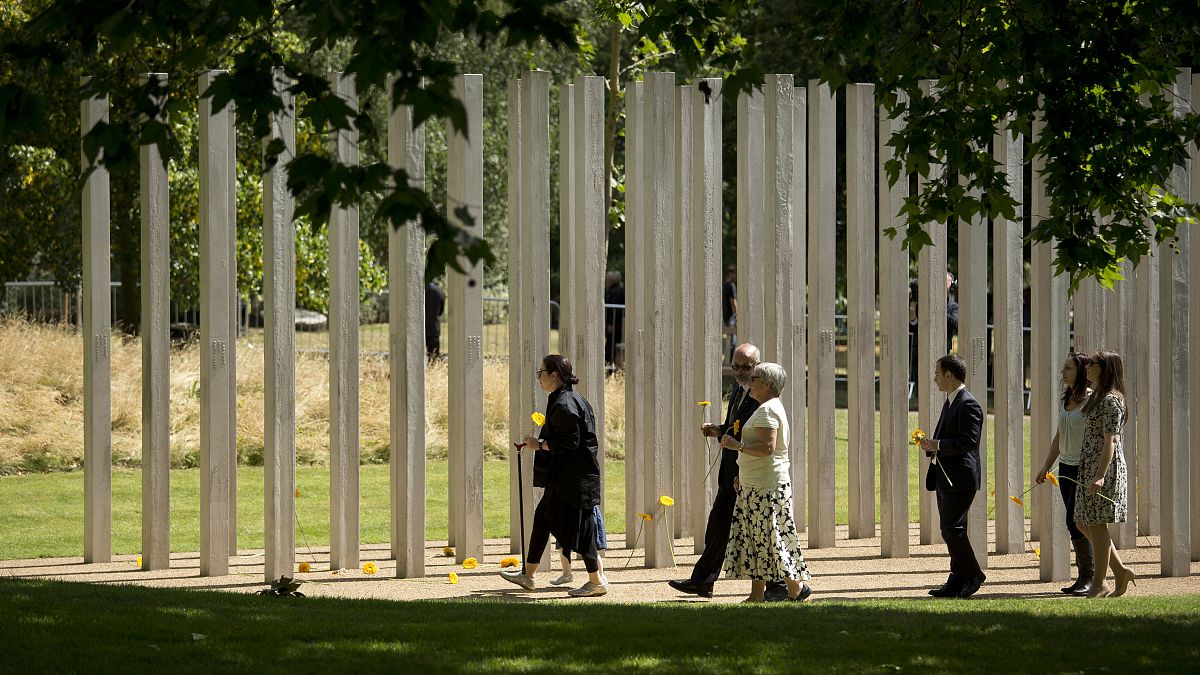The terrorist bombing of three Underground stations and a double-decker bus constituted the worst attack on the UK capital since World War II.
In London's Hyde Park, 52 stainless steel pillars stand together in four clusters in the southeastern corner of the 350-acre site.
Each of the pillars represents one person who died, while each cluster symbolises one of the four locations where the bombs went off on July 7, 2005.
Sixteen years on, people still stumble across the memorial which was erected in 2009, without realising at first that it is dedicated to what became known as the 7/7 attacks.
The terrorist bombing of three Underground stations and a double-decker bus constituted the worst attack on London since World War II, and remains the worst individual terrorist barbarity Britain has known.
As well as those killed, several hundred more people were injured and many remain maimed for life. The four bombers also died.
Overnight, the UK capital had been in celebratory mood, London having just been awarded the 2021 Olympic Games the previous day.
The three metro train bombs went off almost simultaneously during the weekday morning rush hour, close to three stations in central London: Aldgate, Edgware Road and Russell Square. Altogether, 39 people died.
The fourth device was detonated by the youngest of the bombers just under an hour later at Tavistock Square, on the upper deck of the red London bus. Another 13 were killed.
Within nine days, police had named the four bombers, three of whom it was revealed had travelled from Leeds in the north of England early that morning, joining the fourth at Luton, north of London.
A subsequent investigation found that two of the young men had been under surveillance and had possible links to Al Qaeda, but the extent of the terrorist group's involvement is not known. The four used easily available materials to make their bombs.
The following year the then Home Secretary (interior minister) John Reid described the bombers as "ordinary British citizens" who were motivated by "anger at perceived injustices by the west against Muslims and a desire for martyrdom".
The atrocity prompted a rethink in British counter-terrorism policy, which thereafter focused much more on "homegrown" threats as well as risks from abroad. There was a growing awareness of the danger of Islamist radicalisation among Muslims, inspired by the Syrian war and other events.
In the years since, Europe has suffered more such terrorist atrocities carried out by the so-called Islamic State group, Al Qaeda, or lone attackers. London too has had its share, albeit not on the scale of some other European cities such as Paris, Nice and Brussels.
In the West and in particular the UK in recent years, right-wing extremism has been identified as a growing threat -- with a report in 2020 describing "the surge in far-right political terrorism" as a worrying trend.
